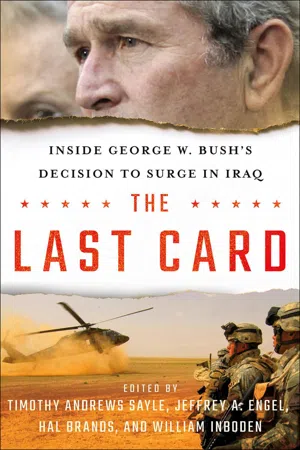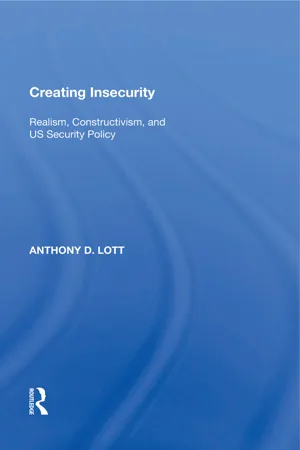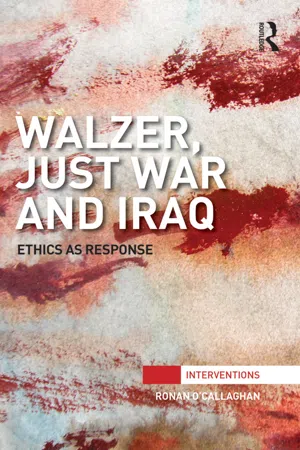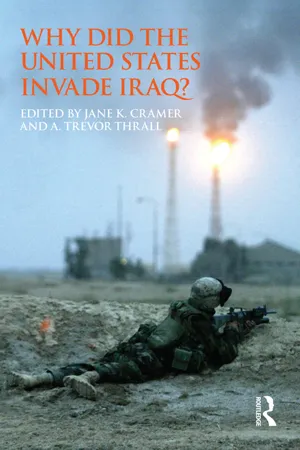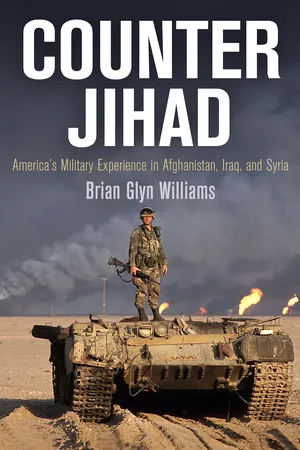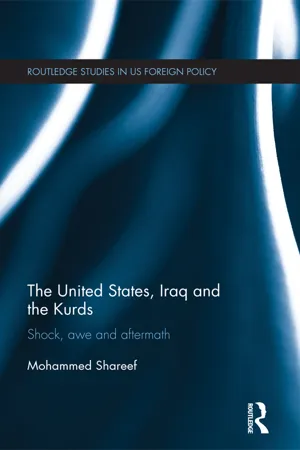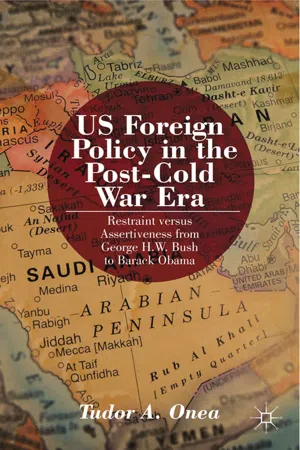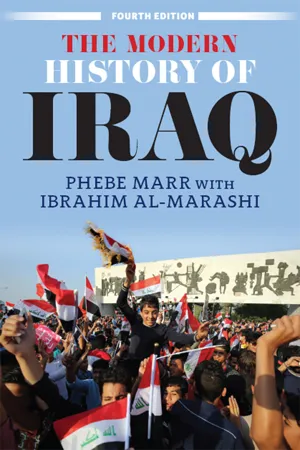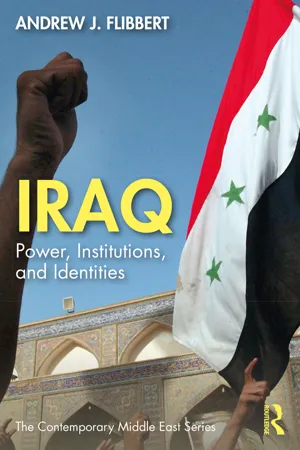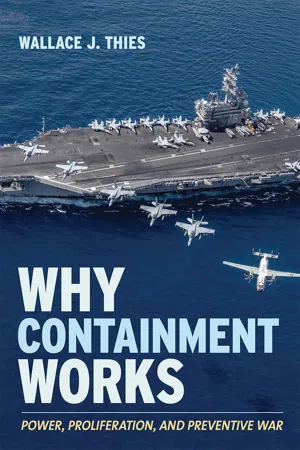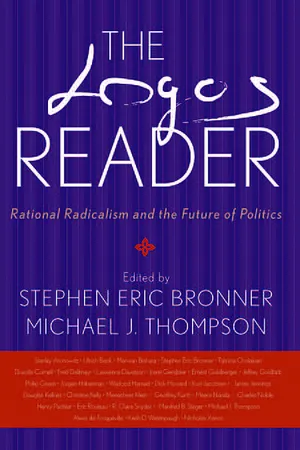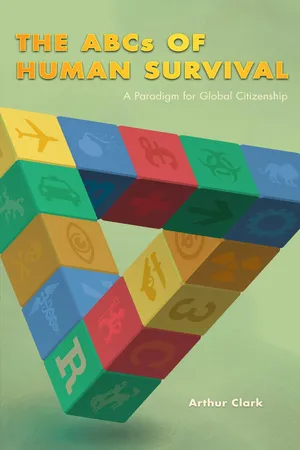History
Invasion Iraq
The invasion of Iraq refers to the military intervention led by the United States and its allies in 2003, which aimed to overthrow the regime of Saddam Hussein. The invasion was justified on the grounds of eliminating weapons of mass destruction and promoting democracy in the region. However, it sparked significant controversy and had long-lasting consequences for Iraq and the broader Middle East.
Written by Perlego with AI-assistance
Related key terms
Related key terms
1 of 4
Related key terms
1 of 3
12 Key excerpts on "Invasion Iraq"
- eBook - ePub
The Last Card
Inside George W. Bush's Decision to Surge in Iraq
- Timothy Andrews Sayle, Jeffrey A. Engel, Hal Brands, William Inboden, Timothy Andrews Sayle, Jeffrey A. Engel, Hal Brands, William Inboden(Authors)
- 2019(Publication Date)
- Cornell University Press(Publisher)
This book thus offers a new account of presidential and administration decision making in the run-up to a momentous change in America’s war in Iraq. To be clear, this book is not a history of the subsequent implementation of the surge by US military forces and civilian personnel in Iraq. Neither is it designed to assess the outcome of the surge or adjudicate the wisdom and necessity of the Iraq War itself. Those questions will no doubt be exhaustively assessed by future historians. Moreover, given the complexity of the implementation of the surge and the debates surrounding it, the Obama administration’s later decisions regarding troop deployments in Iraq, and the rise of the Islamic State, among other ongoing regional quandaries, including the ensuing Syrian civil war, any rigorous assessment of the surge’s effects will require additional volumes. But we cannot begin to grapple with the history of the surge without understanding how it came to be in the first place. Telling that story is the purpose of this book, and this project.The history of the surge must begin with another presidential address to the nation. A little after 10 p.m. Eastern time on March 19, 2003, George W. Bush announced that “American and coalition forces are in the early stages of military operations to disarm Iraq, to free its people and to defend the world from grave danger.” The Iraq War had begun.Although Bush warned the country that military operations in Iraq could “be longer and more difficult than some predict,” it certainly did not appear that way in the spring of 2003. The American invasion of Iraq was a military marvel. Although planners had hoped for a two-front attack against Saddam’s forces, Turkey’s refusal to serve as a launching pad for the US assault caused a last-minute change of plans for Operation Iraqi Freedom (OIF). Nonetheless, the relatively small invasion force—fewer than 150,000 American troops supported by 20,000 British and coalition troops—a small fraction of the number of forces the US and its allies had used to evict the Iraqi military from Kuwait in Operation Desert Storm in 1991—raced toward Baghdad.6 The invasion force, purposely limited in size to preserve agility and strategic surprise, routed or bypassed Iraqi forces and quickly shattered Saddam’s regime. Early premonitions of severe fighting in Iraq’s urban centers, and of thousands of Iraqi and coalition casualties, turned out to be overstated—for the time being.On May 1, President Bush flew to the aircraft carrier USS Abraham Lincoln and declared an end to major combat operations. With this phase of OIF complete, American planners looked forward to a rapid drawdown that might see as few as twenty-five thousand US troops left in Iraq by the fall of 2003.7 But preinvasion plans had overestimated the level of stability that would follow Saddam’s defeat. As one history of OIF, drafted by the Center for Army Lessons Learned, put it, “the great challenge of OIF” would prove to be not the campaign to topple Saddam, but the “struggle to create a new Iraq in place of the Saddam regime.”8 - eBook - ePub
Creating Insecurity
Realism, Constructivism, and US Security Policy
- Anthony D. Lott(Author)
- 2019(Publication Date)
- Routledge(Publisher)
Chapter 8 Creating Insecurity IV: Regime Change, WMD, and the Invasion of IraqThe combination of 11 September 2001, a new pre-emptive national security strategy, and the worldwide war on terrorism culminated in the desire of the United States to galvanize the international community to support the removal of Saddam Hussein from power in Iraq. Euphemistically referred to as regime change, the George W. Bush Administration pushed the world community to take military action against Iraq in order to eliminate his suspected stockpiles of weapons of mass destruction. While it remains unclear exactly when the U.S. administration conceived of the need to remove the Iraqi dictator from power, the swift military build-up in the Persian Gulf and the frantic diplomatic efforts from September of 2002 through February of 2003 demonstrated a near 'inevitability' to U.S. policy. When the invasion of Iraq finally happened, it seemed to be a surprise to few, including the Iraqi regime, its soldiers, and its citizens.Critics of the U.S. decision to invade Iraq, however, recognized quite quickly that the potential for creating insecurity was at least as great as any post-war enhancement to national security. Both realists, espousing their traditional 'cautious paranoid' vision of world politics, and political constructivists, drawn to how the debate was being framed and the political issues being explored, questioned the strategic efficacy of U.S. policy. The negative potential for disrupting U.S. security goals caused realists to critically evaluate the Bush Administration's war policies. Simultaneously, seeking to challenge the motives of the Administration to perpetuate a sustained superpower mentality, political constructivists located hidden sources of ideational insecurity. Perhaps even more than the discussions concerning BMD, the Drug War, and democratic security, U.S. policy to 'liberate' Iraq provides an instance of state practice that unintentionally creates insecurity while attempting to manage national security concerns. In the analysis that follows, a brief historical discussion of the U.S. rationale(s) for war will be explored. While it has been argued that a strategic rationale for war remained absent during the run up to the war, state policy makers offered various reasons why a war was necessary and required immediate attention. Following the state version of the events leading to war, a realist interpretation demonstrates why cautious paranoids found fault with the arguments put forth by the state. This discussion details the traditional realist reliance on containment and deterrence when faced with an enemy endowed with WMD. In addition, realists recognized the potential that unintended political and military complications could undermine the U.S. security position in Iraq and lead to a long and costly campaign to achieve a suitable strategic outcome. Then, a political constructivist interpretation of the political milieu in the period prior to the war considers how specific identity performances provide an understanding of cultural sources of insecurity beyond the realist interpretation. Finally, the two approaches are brought together in order to offer a balanced analysis of U.S. policy toward Iraq. As with the applications above, realists and political constructivists find common ground in the antipathy toward state actions. However, their theoretical points of departure require that we balance both positions rather than attempting to subsume one into the other. - eBook - ePub
Walzer, Just War and Iraq
Ethics as Response
- Ronan O'Callaghan(Author)
- 2015(Publication Date)
- Routledge(Publisher)
In 2003, US troops entered a country that was struggling for daily survival and almost entirely dependent on central government for jobs and daily sustenance. The US political mission, therefore, aimed at building the foundations necessary for Iraq to re-emerge as a modern, peaceful democracy in a region beset by violence. The purpose of this chapter is to illustrate how US political objectives radically altered Iraqi society. The chapter begins by outlining the relationship between Walzer’s thought and the type of society the US invasion hoped to create. It then proceeds to unpack how the socio-political environment spiralled out of US control, creating a new Iraq distinct from Ba’athist rule but radically different from US pre-war imaginings. Although this chapter discusses post-Invasion Iraq in terms of Shi’a, Sunni and Kurdish populations, it does not seek to represent these groupings as pre-given historical formations. Rather, it will demonstrate why the current articulations of Iraq’s various ethno-sectarian identities are in part a product of the invasion and occupation. Iraq’s current ethno-sectarian make-up, in this respect, is partly the result of the invasion and the ethico-political decisions made by the Bush Administration and the US Military.The pre-war imagining of justice in Iraq
The Iraq War is often characterised as an exemplar of neoconservative foreign policy in action (see Schmidt and Williams 2008 ).2 Indeed, Iraq had been firmly on the neoconservative foreign policy agenda throughout the 1990s (Hirst 2013 ). Advocates of intervention argued that Iraq had either procured or sought to procure weapons of mass destruction (WMDs) and that the Ba’ath regime posed a threat to security and stability in the Middle East. For example, a letter directed to then US President Bill Clinton by the Project for the New American Century (a prominent neoconservative group) argued for unilateral intervention on the grounds that ‘[t]he only acceptable strategy is one that eliminates the possibility that Iraq will be able to use or threaten to use weapons of mass destruction’.3 Although neoconservatives were influential within the Bush Administration, the 2003 invasion of Iraq is inseparable from the September 11 attacks in 2001. These attacks confirmed to neoconservatives that Middle Eastern instability posed a direct threat to US security, and that decisive military action was needed to exert control over potentially dangerous nations in the region. While Afghanistan, as the designated origin of the attacks, became the immediate target, the desire to link the Iraq question to the terrorism problem began to intensify within policy circles. In February 2002, for instance, US Secretary of Defence Donald Rumsfeld claimed that the US knew that Iraq possessed chemical and biological WMDs, and insinuated that terrorist groups may seek to obtain such weapons from Iraq (US Department of Defense, 2002 - eBook - ePub
- Jane Cramer, A. Trevor Thrall, Jane K. Cramer, A. Trevor Thrall(Authors)
- 2013(Publication Date)
- Routledge(Publisher)
1 IntroductionWhy did the United States invade Iraq?Jane K. Cramer and A. Trevor ThrallOn March 22, 2003, President George W. Bush told the United States that “Our mission is clear, to disarm Iraq of weapons of mass destruction, to end Saddam’s support of terrorism, and to free the Iraqi people.” In the first year after the invasion of Iraq, evidence showed that Saddam Hussein had no weapons of mass destruction (WMDs), nor was there any intelligence to support the claims Saddam Hussein was connected with Al Qaeda or the 9/11 hijackers. These revelations led the majority of Americans to believe that invading Iraq was a mistake and that they had been misled before the war.1 Revealing documents like the Downing Street Memo seemed to confirm for many observers that the Bush administration had intentionally misled the public. Indeed, the secret British memo stated that “military action was now seen as inevitable” by US administration leaders and that the “intelligence and facts were being fixed around the policy” in Washington in July 2002, well before President Bush presented the possib-ility of invading Iraq to Congress and the UN in September 2002, and long before Bush declared publicly that he reluctantly made the decision to invade in March 2003 (Danner 2006).In the years since the invasion, the debate over why the United States invaded Iraq has not abated, but it has progressed. This volume is aimed at bringing together the leading arguments to date about why the United States invaded Iraq. Like other scholars, we began studying the run-up to the Iraq War as it happened in 2002. We first focused on discerning how war came about politically—we tried to unravel and explain the intersection of events, intelligence failure, presidential leadership, threat manipulation, congressional acquiescence and international resistance and cooperation—in short, the process and politics of threat inflation that led the United States as a whole to go to war (Thrall and Cramer 2009). - eBook - ePub
Counter Jihad
America's Military Experience in Afghanistan, Iraq, and Syria
- Brian Glyn Williams(Author)
- 2016(Publication Date)
- University of Pennsylvania Press(Publisher)
CHAPTER 4The Invasion and Occupation of Iraq
We will in fact be greeted as liberators. —Vice President Dick Cheney predicting how U.S. troopswould be welcomed when they invaded Iraq The Americans have occupied our land under a false pretext, and without any international authorization. They kill our women and children and old men. —Iraqi Sunni insurgent from the Army of MuhammadPre-invasion Controversies
In the winter of 2002–3, Saddam Hussein, increasingly fearful of a looming U.S. invasion, allowed the UN to resume the WMD inspections that had been halted back in 1998 on the eve of Clinton’s Operation Desert Fox. As a potential U.S. invasion seemed a distinct likelihood, a worried Hussein ordered his military leaders to “cooperate completely” with the UN inspectors.1 Hussein also told his leaders, “What can they discover, when we have nothing?”2 His announcement to his generals that Iraq no longer possessed WMDs was said to have sent their “morale plummeting.”3 Michael Gordon and General Bernard Trainor have written of Hussein in their history of the Iraq invasion and have stated that “Saddam was not looking for a war with the United States and he was not expecting one either. . . . While Saddam believed that revealing the absence of WMD was risky, he discounted the danger of alarming the United States. According to his associates, he did not consider the United States a natural adversary. He saw no reason why the Americans would want to invade Iraq.”4But as the UN inspectors came up empty handed in their search for Iraqi WMDs, the White House grew increasingly frustrated with the UN. Anti-UN sentiment was rife among the Neo-Cons at this time as the UN inspectors seemed to be dismantling the Bush administration’s main rationale for launching a preemptive invasion. The IAEA nuclear weapons inspectors who had also been allowed in to resume inspections further infuriated the Bush White House when they stated in February 2003, “After three months of intrusive inspections, we have to date found no evidence or plausible indication of the revival of a nuclear weapons program in Iraq.”5 - eBook - ePub
- Mohammed Shareef(Author)
- 2014(Publication Date)
- Routledge(Publisher)
Wilkerson emphasised that a case could be made in International Law that it was a continuation of US foreign policy. 275 The Bush administration’s Iraq policy was a continuation of a policy that the Clinton administration had also articulated. It was to prevent Saddam Hussein from acquiring WMD and escape the international inspection verification regime that Saddam had signed up to, and a US willingness to use force to enforce this. Clinton had fired rockets in 1998 at Iraq and maintained the No-fly zones. In terms of the use of force this was a continuation of that policy. Kagan stressed that there was no departure in US Iraq policy and that there was a ‘tremendous amount of policy continuity’. After 9/11 the Bush administration decided that the threat posed by an Iraq potentially in possession of WMDs was greater than had been previously imagined. The policy before the invasion had continued to be regime change. This remained a constant desire of the Clinton administration, as it was for Bush senior’s administration. It was ‘only a change in the method by which that strategy was going to be implemented’. 276 Regime change in Iraq was consistent in US policy but was given greater urgency because of the impact of 9/11 on the US mindset. The attacks on 9/11 had ‘only amplified the sense of threat’. 277 The decision to invade Iraq, motivated by different reasons and purposes and attributed to different motivations and ideological factions within the administration, eventually led to the invasion of Iraq on 19 March 2003. Saddam’s regime fell in spectacularly speedy fashion in three weeks, testimony to US military supremacy and its unrivalled technological advancements. However, what technological advancements could not achieve nor address was the Phase IV post-hostilities period which is the backbone to success of any military venture involving the occupation of a foreign country - eBook - ePub
US Foreign Policy in the Post-Cold War Era
Restraint versus Assertiveness From George H. W. Bush To Barack Obama
- T. Onea(Author)
- 2013(Publication Date)
- Palgrave Macmillan(Publisher)
6THE UNITED STATES SUPREME: THE INVASION OF IRAQThe US decision to invade Iraq was the result of the congruence in the aftermath of the September 11 attacks between the neoconservative movement that provided the second tier of decision-makers, the Bush administration, and the central hawkish conservative players in the cabinet, especially Secretary of Defense Donald Rumsfeld and Vice President Dick Cheney.1 The chief consideration was maintaining US prestige as a strong international leader.This is not to suggest that the invasion of Iraq was the result of a conspiracy perpetuated by neoconservatives. This view is manifestly wrong, for several reasons.2 Neoconservatives never controlled the principal functions in the administration: the most senior neoconservative figure was Paul Wolfowitz, the number two at the Pentagon. Before September 11, the neoconservatives did not meet with any success in promoting their agenda of regime change in Iraq, and, moreover, the formula that they advocated, which was seizing control of an enclave in Southern Iraq and developing there the forces of the Iraqi opposition, was not adopted. The administration also rejected the neoconservative candidate to succeed Saddam, the Iraq National Congress leader Ahmed Chalabi.3 Finally, suspecting, based on his campaign declaration in favor of a “humble foreign policy” and his reliance on Condoleezza Rice, a known protégé of Brent Scowcroft, that Bush was going to follow the same realist precepts in foreign policy as his father did, the neoconservatives had openly backed as president his Republican counter-candidate John McCain.4 - eBook - ePub
- Phebe Marr(Author)
- 2018(Publication Date)
- Routledge(Publisher)
Chapter 9 The Saddam Husain Regime,1990–2003IRAQ EMERGED FROM THE IRAN-IRAQ WAR WITH ITS STATE INTACT and with some national pride in having outlasted its adversary, but the country faced numerous problems. It was operating with a depleted treasury, and there was still no peace with Iran. Iraq also had to deal with changes in the international environment—the end of the Cold War, a deterioration in relations with the United States, and a sudden collapse of the oil market. These accumulating problems produced a gathering storm that became apparent by late spring 1990 and contributed to the disastrous decision to invade Kuwait. The invasion brought decisive international action, leading to a second Gulf war that ended in defeat, harsh and humiliating cease-fire terms for Iraq, and a widespread rebellion in the north and south of the country that tore the fabric of the state.The regime survived—barely—but the steps it took to do so emphasized its worst features: a narrow power base, reliance on security institutions, and brutality in repressing its population. Saddam’s government faced continual opposition in the north from the Kurds, who carved out a self-governing enclave that would make their future reintegration into the Iraqi state more difficult. Shi‘i opposition continued in the south, where the population was largely alienated and neglected. And the exiled opposition gained a new lease on life in neighboring countries and in the United States. In foreign affairs, the main feature of the decade was the struggle with the West to remove the cease-fire terms—sanctions, weapons inspections, and no-fly zones, with only partial success. The outcome was a continual downward spiral—economically, politically, and socially—from which Iraq could not fully recover before the international invasion of 2003 pushed it over the edge. - eBook - ePub
Iraq
Power, Institutions, and Identities
- Andrew J. Flibbert(Author)
- 2023(Publication Date)
- Routledge(Publisher)
17In this same period, Iran’s Islamic revolution was in full swing over the eastern border, with significant political and social consequences in Iraq. The revolution posed too great a challenge and created too much of an opportunity for Saddam to ignore. He launched an invasion of Iran on September 22, 1980. As noted in Chapter 2 , the war’s fundamental causes were a combination of factors, all filtered through the prism of Saddam’s calculation of personal political interest. Some of these larger factors had not changed much over several decades. The geostrategic antagonism between Iraq and Iran was longstanding and effectively unresolvable, at least via unilateral measures. Iran’s decades-long involvement with Iraqi Kurdish and Shi‘i populations also could not be eliminated and only lent itself to careful management. The Iranian revolution nonetheless changed the Iraqi leader’s cost/benefit calculation. The threat posed by the Ayatollah Khomeini’s call to Iraqi Shi‘a to overthrow Saddam’s regime was too grave to ignore, as was Khomeini’s novel political-theological doctrine and his willingness to export it beyond Iran. This combined with Iraqi assumptions about the impact of revolutionary upheaval on a purged Iranian officer corps, as well as Iran’s loss of U.S. arms supply and political support. Together, all these factors brought about one of the most devastating regional wars of the twentieth century.18The war itself began with an airstrike and brief Iraqi advances into oil-rich Khuzestan in southwestern Iran, followed months later by a sharp reversal and realization that the war would not be short and easy. In fact, it lasted nearly eight years and became massive in scale and scope. The war included several phases and military theaters, and much of it was fought like the First World War, with large-scale ground offensives, the brutal use of basic technology like the machine gun, martyred Iranian human waves, and devastating Iraqi chemical attacks on both the battlefield and Kurdish civilians. It also involved air campaigns, Scud missile warfare against Iranian cities, a tanker war, and eventually an international naval dimension when the United States, Britain, and France got involved in protecting Kuwaiti oil tankers from Iranian attack.19 - eBook - ePub
Cornell Studies in Security Affairs
Power, Proliferation, and Preventive War
- Wallace J. Thies(Author)
- 2020(Publication Date)
- Cornell University Press(Publisher)
12 Maybe Saddam really did believe that he could outlive his foes, but even if he could do so, he was adopting a policy that one day would surely cause him to lose. And even if he somehow managed to stay one step ahead of his enemies both inside and outside Iraq, what exactly would he have accomplished besides staying alive one more day? After all the pain that Saddam had inflicted on the Iraqi people, his enemies would neither forget nor forgive; and with every day that Saddam ran from them, he got older, weaker, and more alone in a hostile world. Saddam’s fate was sealed when the first Iraqi tank crossed the border into Kuwait in 1990. After that, it was only a matter of time before his enemies or old age caught up to him.In similar fashion, the UN Security Council resolutions embargoing the sale of weapons to Iraq meant that Saddam’s armed forces would likely grow more decrepit and inferior to what the Americans and the British were using with every year that Iraq was barred from the international arms market. The morale of Saddam’s soldiers would likely suffer too, which was hardly surprising after all those years of serving as target practice for US and British pilots enforcing the no-fly zones over northern and southern Iraq.In effect, then, there was a dynamic dimension to the quarrel between the Americans and Saddam’s regime, which has yet to receive the attention it deserves in the broader controversy over containment versus invasion. Saddam did not have an unlimited number of years with which to rebuild Iraq’s armed forces and reconstitute its WMD programs. If there had been no invasion of Iraq in 2003, maybe Saddam would have found a way to cling to power long enough to fracture the coalition put together by the second Bush administration in 2002–3. On the other hand, the United States had already demonstrated that it could outlast the Soviet Union in a cold war that stretched over more than four decades, and the Soviet Union was by far a more formidable foe that Iraq. In retrospect, there was one side to this conflict between the United States and Iraq that was in a strong position to outlast the other, but it was not Saddam’s side.The Containment Regime
One senior analyst dates the initial US opening to Iraq to February 26, 1982, when the Reagan administration removed Iraq from its list of states that sponsor terrorism. Formal diplomatic relations between the United States and Iraq resumed in November 1984. The Reagan administration’s goals regarding Iraq during the 1980s were for the most part opportunistic: to conclude an “alliance of convenience with Iraq against . . . Iran.”13 “Like [their] allies in London and Paris, the [Reagan and Bush 41 administrations] had gradually come to believe that Saddam’s aspirations could be turned away from his past militancy and that Iraq could become a source of reason and moderation as well as valuable contracts.” Seen from Washington, “Iraq’s most promising feature was that it was Iran’s enemy. . . . Hence if Iraq could keep Iran in check then that in itself was cause for commendation.”14 - eBook - ePub
The Logos Reader
Rational Radicalism and the Future of Politics
- Stephen Eric Bronner, Michael J. Thompson, Stephen Eric Bronner, Michael J. Thompson(Authors)
- 2005(Publication Date)
- The University Press of Kentucky(Publisher)
Part VIraq: Imperialismand Invasion
Passage contains an image
The Guiding Principles andthe U.S.“Mandate” for Iraq
Twentieth-Century Colonialismand America’s New Empire
Keith D. WatenpaughLate in 2001, the Council on Foreign Relations invited twenty-five academics, corporate executives, oil industry consultants, retired military men, and American diplomats to meet at the James A. Baker III Institute for Public Policy on the oak-shaded campus of Rice University. Cochaired by two former career foreign service officers, Edward P. Djerejian and Frank G. Wisner, the group was charged with mapping out a plan for the United States’ role in Iraq after the anticipated war. The final report that followed, Guiding Principles for U.S. Post-Conflict Policy in Iraq , outlines a three-phase, at least two-year process by which Iraq would be “liberated,” cleansed of Baathists and weapons of mass destruction, and transformed into a democratic, free-market republic fully integrated into the community of nations. The authors of the report never challenge the wisdom of war on Iraq; rather, their plan is built within the framework of what is presumably a “best-case scenario”: a short and swift war with low casualties and relatively little urban warfare. The authors also concede that full compliance by the Iraqi state with relevant UN resolutions or a coup might eliminate the need for an invasion.Although the Council on Foreign Relations is adamant in its assertion that it has no affiliation with the U.S. government, the Baker Institute’s close association with the current administration suggests that the report will contribute to the shape of any postwar American occupation of Iraq. This is especially the case with the involvement of Djerejian, who served for much of the 1980s as ambassador in Damascus and Tel Aviv and has often been used to open back-channel contacts in the Middle East and the Caucasus. Djerejian is a careful and sanguine thinker who is deeply sensitive to the history and culture of the region; he understands intimately the explosive power of sectarian and ethnic conflict and how corrosive the asymmetries of American policies toward Israel have been. The report bears his unmistakable imprint in the way it envisions “quiet U.S.–Iranian cooperation,” notes that the elimination of Saddam Hussein will not cure all the ills of Iraqi society, and concludes that the United States “must avoid imposing Versailles-style conditions on Iraq” (13). - eBook - ePub
- Arthur Clark(Author)
- 2010(Publication Date)
- AU Press(Publisher)
After the 1979 revolution in Iran, in which the Shah was overthrown and a theocratic regime under Ayatollah Khomeini assumed power, Saddam Hussein’s importance as a potential U.S. ally increased in the calculations of political realists. Khomeini’s militant nationalist/theocratic regime was hostile to the secular dictatorship in Iraq, as well as to the Islamic family dictatorships in Kuwait and Saudi Arabia. The United States and other governments supported Saddam Hussein during the 1980s. It was in that decade that Hussein’s threat to international peace and his savage violations of human rights were at their peak as Iraq carried out a long war against Iran, subsequently meting out savage retaliation against Iraqi Kurds for their collusion with Iran during the war. The threat and the violations would not have been possible without support from the United States, Kuwait, Saudi Arabia, and others.Chemical weapons were used against Iran and against the Iraqi Kurds. This was well known to the U.S. government and was largely irrelevant in the maps of political realism — maps that ignore, obscure, or marginalize humanitarian considerations. Therefore, it scarcely made a ripple in the mainstream print or broadcast media.With Iraq’s invasion of Kuwait (a U.S. client state) in August 1990, the U.S. policy priorities shifted again. It is now clear that the U.S. policy objective from that date forward was to replace Saddam Hussein’s government with a more compliant regime. For several reasons, this could not be accomplished immediately. Regime change was obviously illegal, and the conduct of operations ejecting Iraq from Kuwait had been conducted under UN auspices, with a good deal of public relations fanfare about a “new era of promise for the UN Charter.” Furthermore, the coalition of states that had provided some support for the U.S. forces had been recruited within that framework of a UN initiative, with the limited objective of reversing Iraq’s invasion of Kuwait. This context placed constraints on what the United States could do in 1991. There were also other regional strategic considerations at stake in the calculations of the U.S. administration. President George H. W. Bush not only called a halt to the forward movement of U.S. forces, leaving Saddam Hussein in power in Iraq; he also refused to allow U.S. support for a subsequent uprising against Saddam Hussein in southern Iraq. The United States was well aware that Iran was a greater regional power than Iraq. If the Ba’ath government had been toppled in Iraq, the regional influence of Iran might well have expanded and become far more of a challenge to U.S. “national interest” than a chastened and hobbled Saddam Hussein. Based on purely cynical considerations of power politics and public relations, the time was not propitious in 1991 for an immediate removal of Saddam from power. The government of the United States would have to bide its time.
Index pages curate the most relevant extracts from our library of academic textbooks. They’ve been created using an in-house natural language model (NLM), each adding context and meaning to key research topics.
Explore more topic indexes
Explore more topic indexes
1 of 6
Explore more topic indexes
1 of 4
